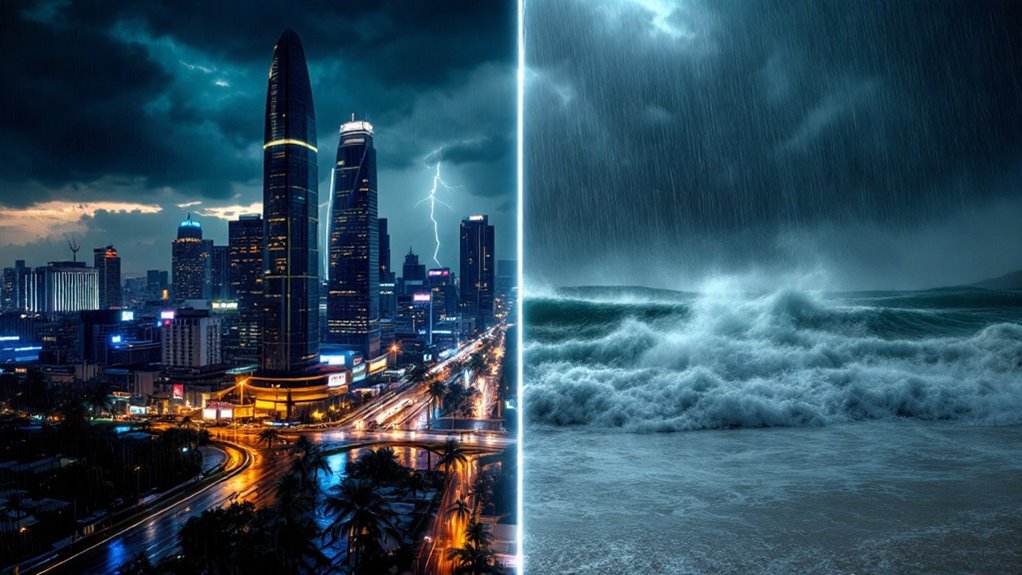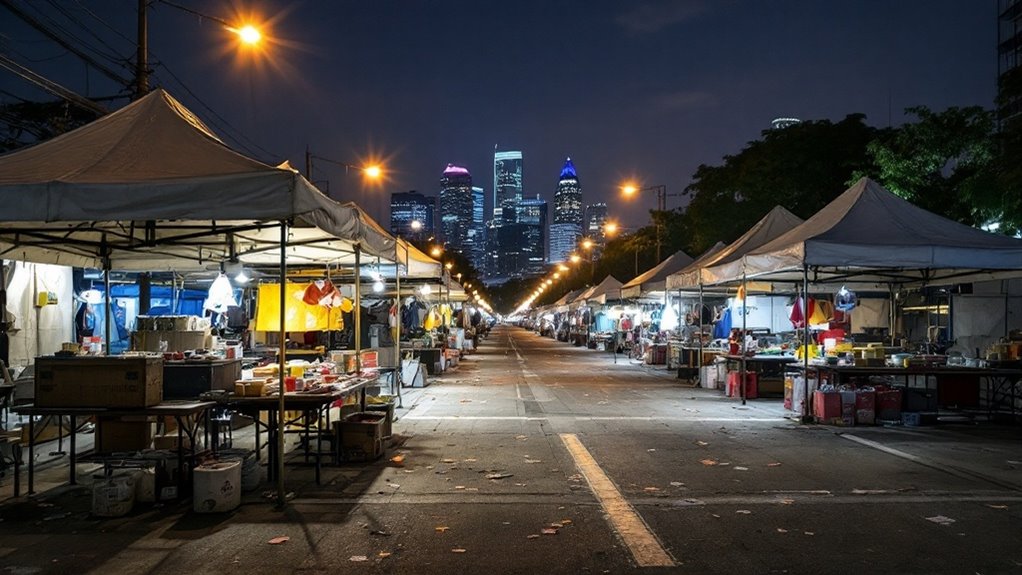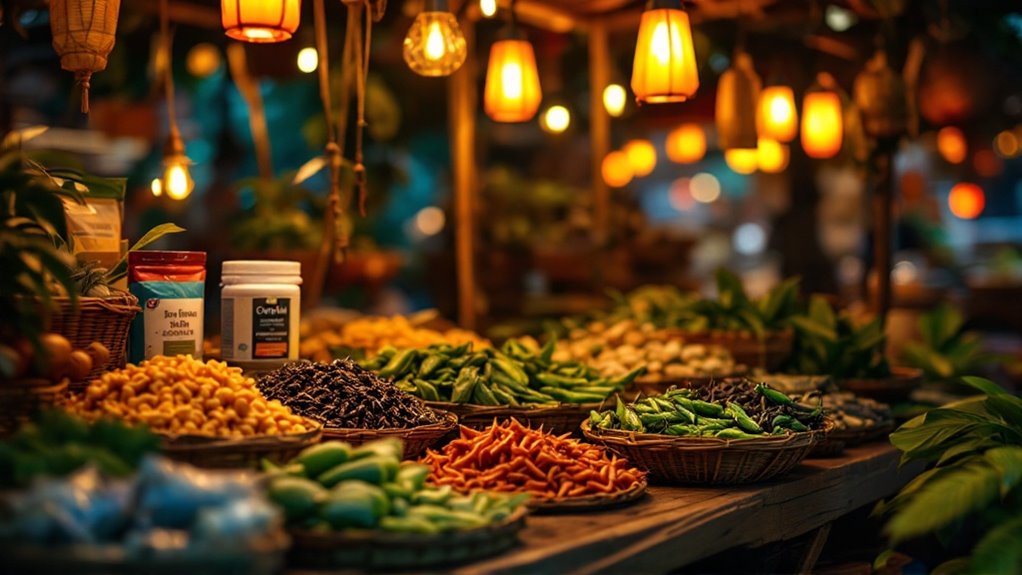Bangkok regularly experiences heavy rainfall and localized flooding during the monsoon season, especially from May to November, with September being particularly wet. While these conditions pose risks for the city’s low-lying districts and infrastructure, projections show southern Thailand faces even higher rainfall totals—up to 4,500 millimeters annually—making the flooding threat there more severe. Despite slightly less extreme weather in Bangkok, both regions contend with significant disruption during this period. Further details reveal the specific impact and measures in place.
Although Bangkok is renowned for its vibrant city life and cultural landmarks, its tropical climate is marked by significant seasonal changes, particularly regarding rainfall and temperature. Throughout the year, Bangkok receives approximately 1,650 millimeters of precipitation, with average temperatures ranging from 25.4°C to 33.7°C. The city’s seasonal variation is most evident during the monsoon season, which begins around May and persists until November. This period is characterized by a substantial increase in rainfall, peaking in September, when the city records about 335 millimeters of rain and experiences over 20 rainy days. Reduced sunshine hours, averaging around six per day during the wettest months, further define this season.
Bangkok’s tropical climate brings dramatic seasonal shifts, with heavy monsoon rains and high temperatures peaking from May to November.
Spring marks the onset of heightened precipitation, especially in May, setting the stage for the intense summer months. These months are distinguished by high temperatures and frequent rainfall, leading to elevated humidity and fewer hours of sunshine. The dry season in Bangkok typically runs from November to April, with much lower rainfall and more comfortable conditions for visitors. As the monsoon wanes in November, rainfall decreases, and conditions become drier by December, the city’s driest month. On average, Bangkok enjoys about 2,625 hours of sunshine annually, with daily sunshine peaking during the dry season. Throughout the year, Bangkok averages 130 rainy days, and the persistent high humidity level is a constant due to the tropical environment.
Heavy and sustained rainfall increases the risk of flooding, particularly in low-lying districts. The drainage infrastructure, while extensive, often struggles to accommodate torrential downpours, especially as rising sea levels and warmer waters exacerbate flooding risks. These conditions frequently disrupt daily life, causing transportation delays and impacting public transit systems. Outdoor activities and tourism decline during peak rainfall, and businesses may face temporary closures or reduced operating hours. Flooding not only strains urban infrastructure but also raises health concerns, as standing water can facilitate the spread of waterborne diseases.
Comparatively, Southern Thailand experiences even greater annual rainfall, with some areas receiving up to 4,500 millimeters, and faces similar but typically more intense flooding threats. While Bangkok is not immune to the risks associated with torrential rains, its climate remains somewhat less extreme than that of Thailand’s southern regions, where more persistent and abundant precipitation shapes daily life and infrastructure challenges.









